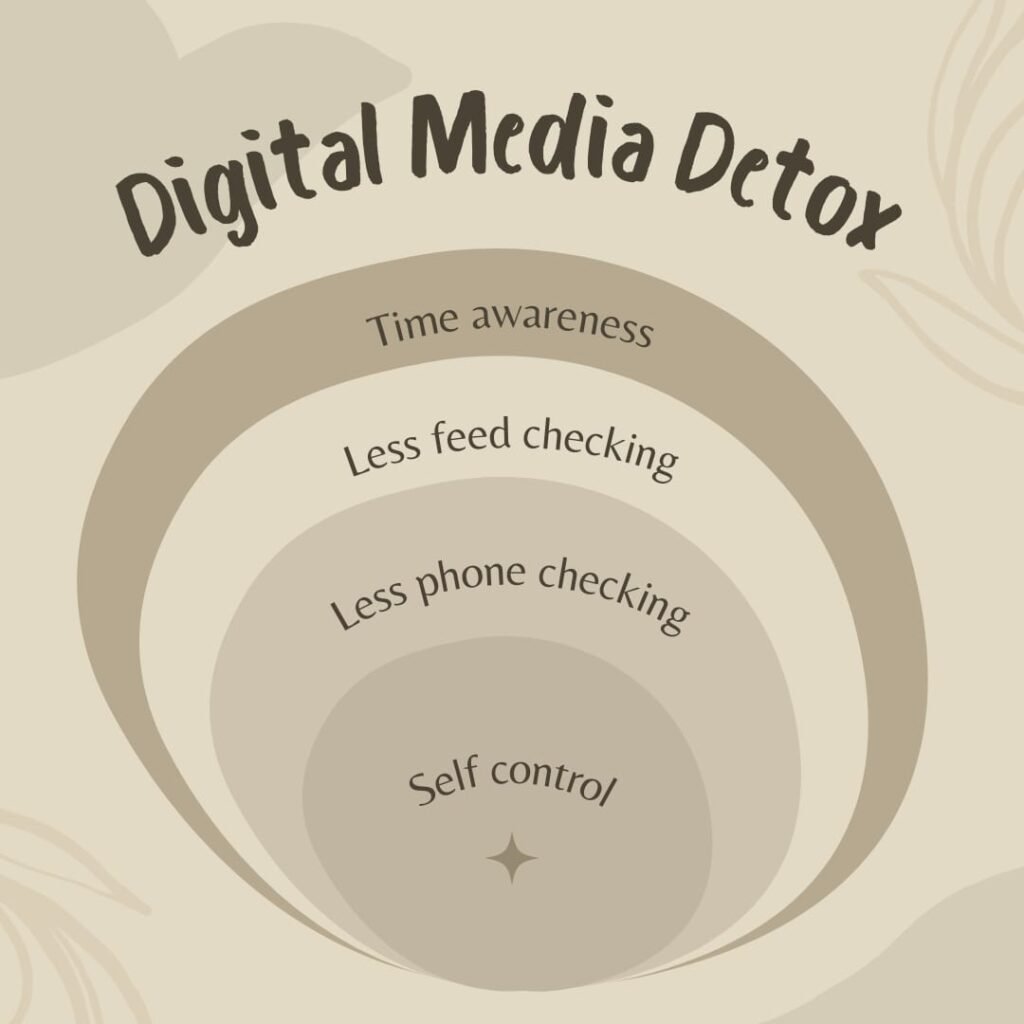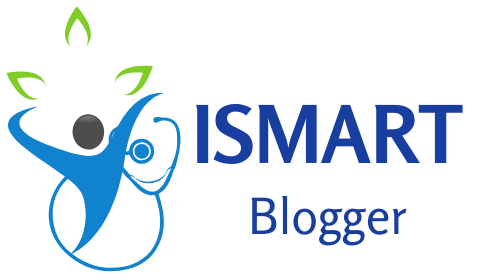Digital Detox: Embracing Tech-Free Time for Self-Care
Discover the transformative power of a digital detox for self-care. Unplug from technology, reconnect with nature, and cultivate mindfulness.
Digital Detox: The Need for Tech-Free Time in Self-Care
Introduction
In today’s fast-paced and technology-driven world, the concept of a digital detox has gained significant attention. A digital detox, simply put, refers to taking a break or time away from electronic devices and online activities. It involves consciously disconnecting from the virtual world to rejuvenate one’s mind, body, and soul.
With the increasing integration of technology into every aspect of our lives, it becomes crucial to recognize the detrimental effects it can have on our overall well-being. This article explores the need for tech-free time in self-care and highlights the importance of striking a balance between our digital lives and personal well-being.
Definition of Digital Detox
A digital detox can be understood as a deliberate period during which individuals choose to disconnect from their electronic devices and limit their exposure to online platforms such as social media, emails, and other internet-based activities. It is an opportunity to take a step back from the constant stimuli that modern technology bombards us with, allowing us to recharge and regain control over our relationship with these devices. During a digital detox period, individuals may choose different approaches based on their preferences and goals.
Some may opt for completely abstaining from all forms of technology for a specific time frame, while others may set limits on certain activities like social media or video streaming platforms. The key aspect here is awareness – being aware of how much time we spend using devices and intentionally designating periods without them.

Growing Reliance on Technology in Modern Society
Technology has become an integral part of contemporary society. From smartphones that have become extensions of ourselves to smart home devices revolutionizing our living spaces; there is no denying that we rely heavily on technology for communication, work productivity, information access, entertainment, and more.
The convenience brought about by these advancements is undeniable, but it comes at a cost. Our increasing reliance on technology has led to a blurring of boundaries between work and personal life, causing stress and burnout.
The constant influx of notifications and the pressure to be always available can take a toll on our mental well-being. Moreover, the addictive nature of social media platforms often leads to mindless scrolling, fostering comparison culture and impacting our self-esteem.
As technology continues to advance at an unprecedented rate, it becomes essential for individuals to recognize the potential downsides and actively seek ways to mitigate their negative impact. This is where embracing the concept of digital detox comes into play – by consciously carving out time for tech-free experiences, we can restore balance in our lives and prioritize self-care for enhanced overall well-being.
The Impact of Technology on Our Lives
Increased Screen Time and Its Effects on Mental Health
In today’s digital age, the pervasiveness of technology has led to a significant increase in screen time for many individuals. Whether it is scrolling through social media, binge-watching TV shows, or engaging in online gaming, the excessive use of screens can have detrimental effects on our mental well-being.
Research has shown a clear correlation between excessive screen time and mental health issues such as anxiety and depression. The constant exposure to virtual stimuli and the pressure to stay connected can leave individuals feeling overwhelmed and emotionally drained.
Moreover, prolonged hours spent staring at screens have been found to disrupt our sleep patterns and quality. The blue light emitted by electronic devices interferes with the production of melatonin, a hormone that regulates sleep.
This disruption can lead to difficulty falling asleep, poor sleep quality, and even insomnia. Consequently, the lack of restorative sleep negatively impacts our cognitive functioning, mood regulation, and overall mental resilience.
Social Media Addiction and Its Consequences
One aspect of technology that has had a profound impact on society is social media. While these platforms were initially designed to connect people globally, they have inadvertently given rise to a new form of addiction known as social media addiction. The constant need for validation through likes, comments, and followers has created an environment where individuals are constantly seeking external validation for their self-worth.
A consequence of this addiction is the emergence of comparison culture. Social media platforms provide an idealized representation of others’ lives while fostering an environment where users compare themselves unfavorably against their peers or influencers they follow online.
This constant comparison can lead to feelings of inadequacy, low self-esteem, and negative self-perception. Furthermore, excessive consumption of social media content often comes at the expense of genuine human connections.
Rather than engaging in face-to-face interactions or meaningful conversations, individuals find themselves endlessly scrolling through their news feeds and investing more time in virtual relationships than in nurturing real-life connections. This detachment from genuine human interactions can leave individuals feeling isolated, lonely, and disconnected from their surroundings.
The impact of technology on our lives is profound and multifaceted. Increased screen time has been linked to adverse effects on mental health, including anxiety and depression, as well as disrupted sleep patterns.
Social media addiction has given rise to comparison culture and the loss of authentic human connections. As we continue to navigate the digital realm, it is crucial for us to be aware of these consequences and take necessary steps towards finding a healthy balance between our digital lives and our well-being.
Reconnecting with nature and the physical world
In the hustle and bustle of our tech-driven lives, many of us have become disconnected from the natural world that surrounds us. Reconnecting with nature is an essential aspect of self-care, as it offers a multitude of benefits for our mental well-being. Spending time outdoors provides a much-needed break from screens and allows us to engage our senses in the beauty of the natural environment.
Benefits of spending time outdoors for mental health
One significant benefit of spending time outdoors is exposure to sunlight, which is crucial for our overall well-being. Sunlight helps regulate our internal clock, promotes better sleep patterns, and stimulates the production of vitamin D in our bodies.
Vitamin D plays a vital role in maintaining healthy bones and has been linked to improved mood and cognitive function. Beyond sunlight, nature immersion itself has been shown to reduce stress levels.
The sights, sounds, and smells found in natural settings have a calming effect on our nervous system. Studies have indicated that spending time surrounded by green spaces can lower cortisol levels (the stress hormone) and lead to a greater sense of calmness and relaxation.
Engaging in physical activities without distractions
Another reason why tech-free time in nature is essential for self-care is because it allows us to engage in physical activities without the distractions that technology brings. When we disconnect from screens, we create space for more meaningful movement and exercise routines. Whether it’s going for a hike or simply taking a leisurely walk along a trail, being physically active amidst nature offers several benefits beyond just improving fitness levels.
It allows us to fully focus on the sensations within our bodies as we move—feeling the ground beneath our feet or experiencing the breeze against our skin. This heightened awareness not only enhances the overall experience but also promotes mindfulness and a stronger mind-body connection.
Fostering mindfulness and mental clarity
Amidst the constant notifications and digital distractions, fostering mindfulness and achieving mental clarity can seem like an uphill battle. However, incorporating tech-free time into our self-care routine can help us in reclaiming these precious states of being.
Disconnecting from constant notifications for improved focus
One of the primary benefits of a digital detox is gaining freedom from the constant barrage of notifications that demand our attention. By intentionally disconnecting from technology, we create an environment that allows us to focus on one task at a time.
This focused approach enhances productivity, as we minimize distractions and concentrate fully on the task at hand. Beyond boosting productivity, detaching ourselves from notifications also provides space for deep thinking, creativity, and problem-solving.
Without interruptions, we can let our minds wander freely and tap into our innate creativity. This uninterrupted time allows us to explore new ideas, think critically about complex problems, or even engage in activities that promote personal growth and development.
Cultivating mindfulness through meditation practices
Incorporating meditation practices during tech-free time is an excellent way to foster mindfulness—a state of nonjudgmental awareness in the present moment. Mindfulness meditation involves focusing your attention on your breath or other sensations while letting go of distracting thoughts.
This practice cultivates a heightened sense of self-awareness and helps us develop skills in regulating emotions and managing stress more effectively. By taking deliberate breaks from technology to engage in mindful meditation during our self-care routine, we can tap into the power of stillness amidst the chaos of daily life.
The Challenges of Implementing a Digital Detox Routine
Setting Boundaries with Technology Usage
Implementing a digital detox routine can be challenging due to the pervasive nature of technology in our lives. However, setting boundaries with technology usage is crucial for reclaiming control over our time and well-being. One effective strategy is to establish specific tech-free time slots throughout the day and week.
For instance, designating certain hours during the evening as “screen-free” can create space for relaxation, quality time with loved ones, or engaging in hobbies and activities that don’t involve screens. Additionally, setting boundaries by creating tech-free zones in specific areas of your home, such as the bedroom or dining table, can promote healthier habits and better focus on offline experiences.
Establishing Specific Tech-Free Time Slots Throughout the Day/Week
To successfully implement a digital detox routine, it’s essential to establish specific tech-free time slots throughout the day and week. This allows for intentional periods of disconnection from digital devices and dedicated time for self-care activities.
Start by identifying parts of your day when you tend to rely heavily on technology, such as during work breaks or before bedtime. By consciously designating these periods as tech-free zones, you create opportunities to engage in alternative activities that promote relaxation and personal growth.
For example, during lunch breaks at work or school, instead of mindlessly scrolling through social media feeds or checking emails on your phone, consider taking a walk outside or enjoying a book. Similarly, dedicating an hour before bedtime as a tech-free period helps improve sleep quality by reducing exposure to blue light emitted by screens – allowing your brain to wind down naturally.
Developing Strategies to Resist Temptation
One of the most significant challenges in implementing a digital detox routine is resisting temptation when surrounded by constant connectivity options. To overcome this hurdle, it’s vital to develop strategies that support your commitment to disconnecting.
First and foremost, communicate your intention with friends, family, and colleagues. By informing them about your tech-free time slots and explaining why they are important to you, they will be more understanding and supportive of your digital boundaries.
Furthermore, consider using technology itself to assist in the process. Utilize apps or built-in features on smartphones that allow you to set timers or restrict access to certain apps during specific periods.
This way, the temptation to mindlessly reach for your device will be minimized. Additionally, engaging in alternative activities during tech-free time can provide a positive distraction from technology cravings.
Engage in hobbies such as painting, playing an instrument, or practicing yoga – activities that not only keep you occupied but also bring joy and fulfillment. Remember that implementing a digital detox routine is a journey that requires patience and self-compassion.
It’s normal to experience moments of struggle or slip-ups along the way. By persistently setting boundaries with technology usage, establishing specific tech-free time slots throughout the day/week, and developing strategies to resist temptation, you can gradually create a healthier relationship with technology while enjoying the benefits of increased offline presence and self-care practices.
Tips for a Successful Digital Detox Experience
Preparing Mentally for the Detox Period
Embarking on a digital detox requires mental preparation to ensure a successful experience. First and foremost, it is crucial to set clear intentions and goals for why you are choosing to disconnect from technology.
Reflect on the reasons that led you to consider a digital detox, whether it’s to improve your mental health, reconnect with loved ones, or foster creativity. By establishing these intentions, you will have a guiding purpose throughout the detox period.
Additionally, managing expectations is vital when preparing for a digital detox. Recognize that it may be challenging initially to break free from the habits formed by constant technological stimulation.
Understand that there might be moments of discomfort or even withdrawal symptoms as you adapt to being disconnected from your devices. By mentally preparing yourself for these challenges and reminding yourself of the long-term benefits of the detox, you can overcome any initial difficulties and stay committed to your goals.
Acknowledging Potential Withdrawal Symptoms
When undertaking a digital detox, it’s essential to be aware of potential withdrawal symptoms that may arise during this period of disconnection. Our brains have become accustomed to quick fixes of instant gratification provided by technology.
Therefore, when we suddenly remove these stimuli from our lives, we may experience restlessness, irritability, or anxiety. It’s important not to be discouraged if such symptoms arise; they are natural responses as your brain adjusts and recalibrates itself away from constant technological engagement.
Acknowledging these withdrawal symptoms allows you to proactively address them with healthier coping mechanisms such as engaging in physical activities like exercise or spending quality time with loved ones. Remember that any discomfort experienced during the detox is temporary and serves as an opportunity for personal growth.
Finding Alternative Activities During Tech-Free Time
During your tech-free time, it’s crucial to engage in alternative activities that foster self-care and personal growth. Take advantage of this opportunity to explore hobbies or activities that you may have neglected due to excessive technology usage. Whether it’s reading a book, practicing mindfulness through meditation or yoga, journaling, painting, gardening, or spending time in nature, there is an abundance of fulfilling alternatives.
Use this time to reconnect with yourself and those around you. Engage in meaningful conversations with loved ones without the distractions of screens and notifications.
Plan outings or experiences that allow you to immerse yourself fully in the present moment. By replacing screen time with activities that enrich your life physically, emotionally, and intellectually, you will discover new passions and create lasting memories.
Conclusion
In today’s digital age, a digital detox has become an essential aspect of self-care. By consciously disconnecting from technology and embracing tech-free time regularly, we allow ourselves the opportunity to restore balance and prioritize our mental well-being.
Though it may initially be challenging to break free from our technology-driven habits and acknowledge potential withdrawal symptoms during a detox period, the rewards are immeasurable. Embracing a digital detox not only allows us to reconnect with nature and engage in mindful activities but also fosters genuine human connections while reducing stress levels. It provides us with valuable opportunities for personal growth and self-discovery by exploring alternative hobbies and interests. So embark on this journey of digital detoxification with clear intentions; prepare yourself mentally for potential challenges while staying committed to your goals; find joy in alternative activities during tech-free time; ultimately leading you towards a more balanced life filled with happiness and fulfillment away from constant technological distractions.





